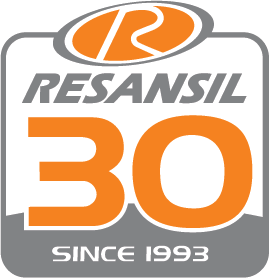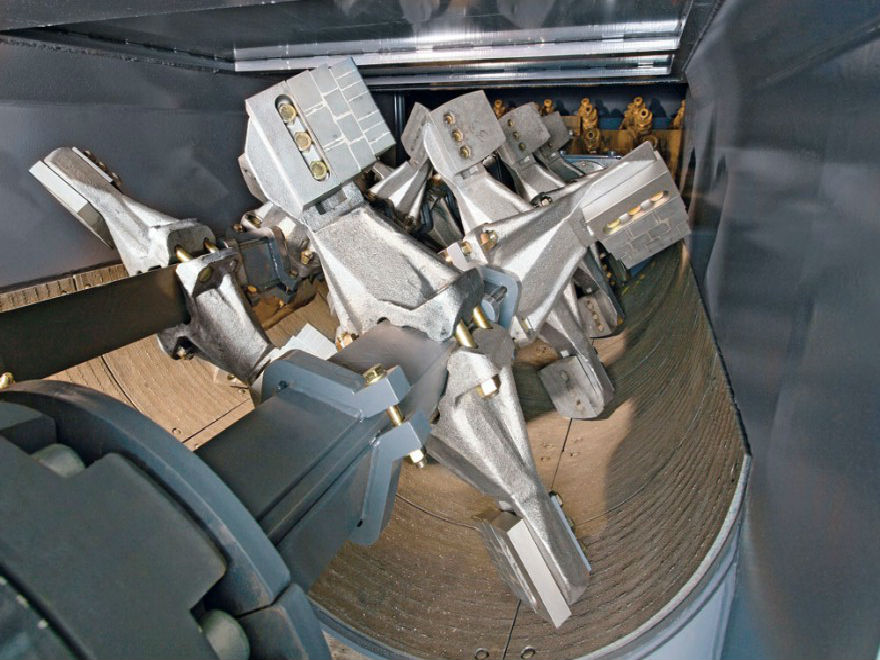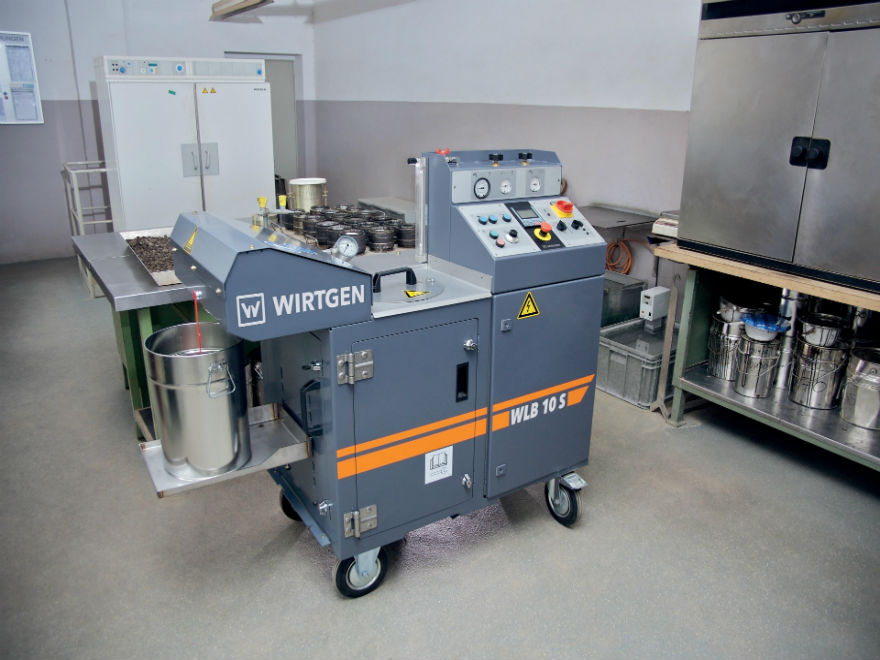A cold recycling train builds new roads
Milling and spraying of the existing pavement are performed through a milling and mixing rotor equipped with tungsten carbide tools similar to those used for cold grinding. Inside the machine, the material is then processed in a mixing chamber or in a compulsory mixer, in which binders agents are added by microprocessor control. Some recycling models include the so-called “variable mixture chamber”. The higher the work depth, the volume of the mixing chamber will be also higher. The number of binders to be added increases at the same time, controlled by a computer in accordance with the work depth and the machine´s advance speed. This concept permits an optimal processing of the recycling mixture. Among the types of binders that are to be added, we can mention the bitumen emulsion, the foamy bitumen and the cement.
Grout mixer meters cement amounts
The hot bitumen for the production of foamy bitumen, bitumen emulsion and water – which is always compulsory- is delivered by tank trucks. The cement may be pre-spread as a dust ahead the cold or aggregated recycler by using a mixture of the slurry called (there is no information in the original document).
The grout mixer accurately measures the correct cement quantity, it is mixed with water in order to obtain a cement slurry and then transfers the liquid binding agent directly to the recycler mixture chamber. Therefore, the cement pre-spreading may be obviated. The grout mixer impedes the dust development and material waste and helps to improve the recycled layer quality.
Cold recycling
The cold recycling process implies the milling and the granulation of the damaged asphalt layers that then rebound, which are placed again and are compacted. WIRTGEN cold recyclers are the ideal choice for a wide variety of applications that go from recycling asphalt fine layers on secondary roads with low traffic volume up to recycling thick asphalt packages in highways with a heavy traffic submitted to extreme loads.
Cold recycling in site
When it is equipped with a pavement layer, the cold recycler of “rear load” is able of using not only the standard cutting process for recycling but also the descending process developed by WIRTGEN. When the reduction process is used the milling, and mixing rotor operates in the recycler´s displacement direction.
Cold recycling with cutting process
(There is a video about cold recycling with cutting process).
When it is specified, the cement is pre-spread by a Streumaster spreader which is followed by the water and the linking tank trucks. The milling and mixing rotor granulates the asphalt layers up to a depth of 15 cm. The pre-spread cement is mixed at the same time while the water and the bitumen emulsion or the foamy bitumen are injected in the mixing chamber through injection bars. The recycled material is paved throughout all the width of the work by an extension conveyor and it is placed in the line and level with the VÖGELE integrated paving ruler. Next, the compaction is performed by HAMM rollers.
Cold recycling plant
The plant KMA 220 is mounted on a flatted- platform semi-tow and equipped with an independent station. The mobile concept permits that the plant is rapidly relocated in different operating places and installed in just few time. The wheeling loaders empty any kind of materials of not coupled origin in the dosing hopper through vibrating grilles. The silos and /or tank trucks provide the plants with binding agents such as cement, bituminous emulsion or foamy bitumen. For high accurate measurement, a system controlled by microprocessor monitors the addition of source and binding materials in the mixing plant. A resistant double-shaft compulsory mixer produces a high-quality homogeneous construction material. In a final stage, the recycled mixture is simply unloaded through the rotary belt conveyor allowing that even long semi-tows load at the highest capacity.
Cold recycling with binders
Little amounts of cement are pre-spread in a first step by a Streumaster spreader followed by water and emulsion tank trucks. The WR uses its powerful milling and mixing rotor for granulating the damaged pavement layers by simultaneously mixing the cement and by injecting water and foamy bitumen to the mixing chamber through two individually injection bars controlled by a microprocessor. The resulting homogeneous construction material is classified for the finish by a grader and then compacted with different HAMM rollers.
A bitumen tank truck goes ahead followed by a slurry mixer WIRTGEN WM 1000. The bitumen and slurry mixer tank truck supply the WR240/W240i, WR 250 with the required binders in order to recycle the pavement that needs to be repaired. The recycler uses its powerful milling and mixing rotor for granulating the damaged pavement layers, by simultaneously injecting water cement slurry and foamy bitumen in the mixing chamber through two injection bars controlled by microprocessor. The resulting homogeneous construction material is classified by the finish by a grader and then compacted by different HAMM rollers.
Laboratory asphalt foam plant
- General tests of bitumen type used for determining its suitability for the foam formation process
- Optimization of the foamy process by adjusting the temperature and the amount of water to be added.
- Production mix in the laboratory by using different bitumen application rates.
The foamy bitumen is used more and more as an economic binder in the cold recycling. The preliminary tests with the mobile laboratory plant WLB 10S permit to accurately determining the quality of the foamy bitumen in the lab, even before the beginning of the construction. The extremely simple manipulation permits to rapidly vary diverse parameters such as the amount of water, the pressure and the temperature and to produce different types of foamy bitumen in a short period of time. Upon the base of the results obtained, the laboratory mixer WLM 30 may be used for determining the mixture proportion and to define the optimal foamy bitumen for the production of the test specimens. The integrated air compressor permits that the plant functions even in those places where there is no external supply of compressed air. The plant may be also used to test the suitability of the mixtures through the addition of cement or lime in combination with foamy bitumen.
Learn about our offer of cold recycling products – Click here


